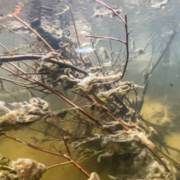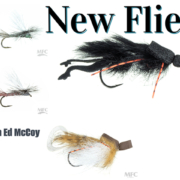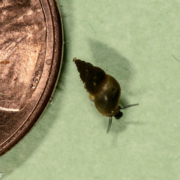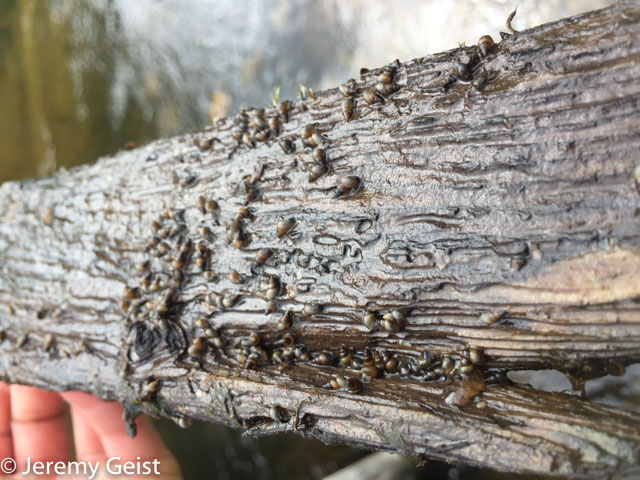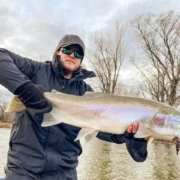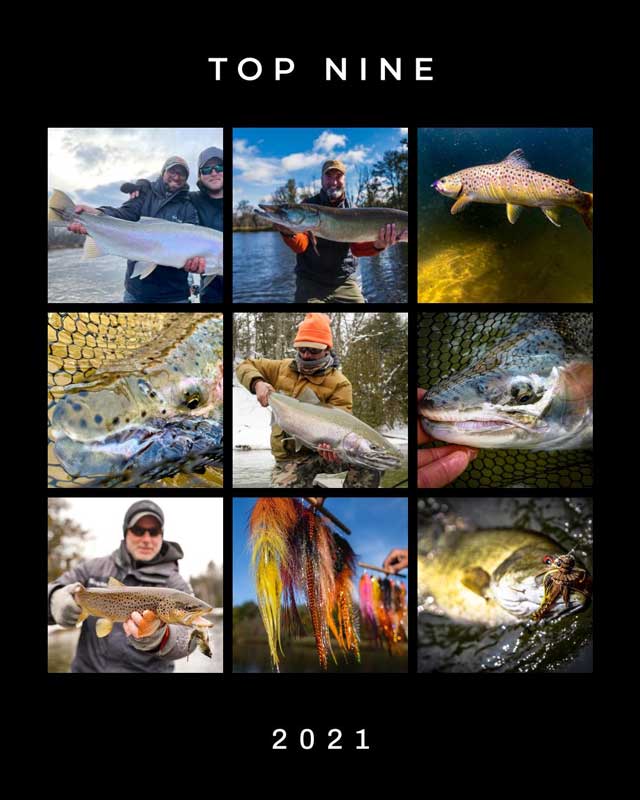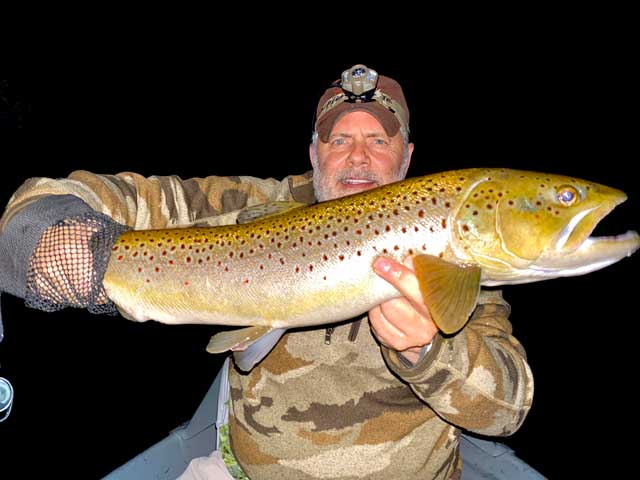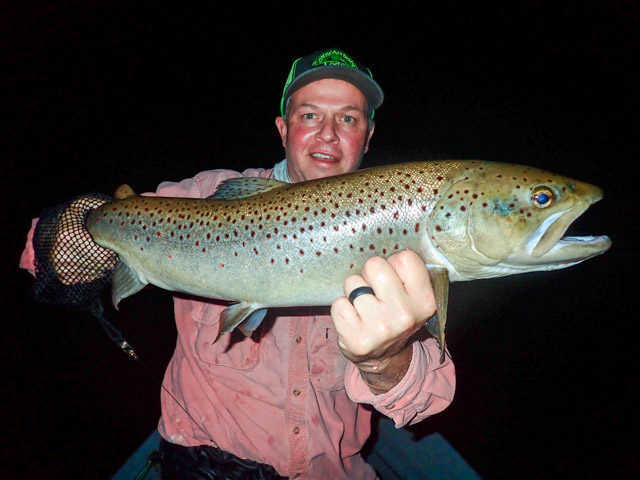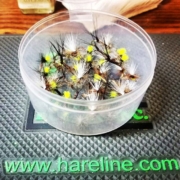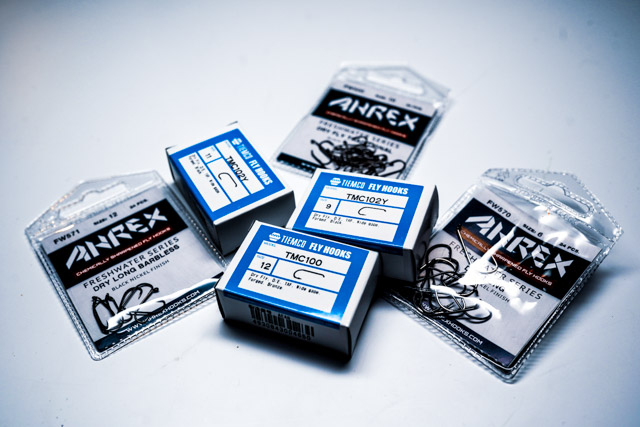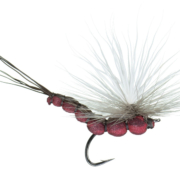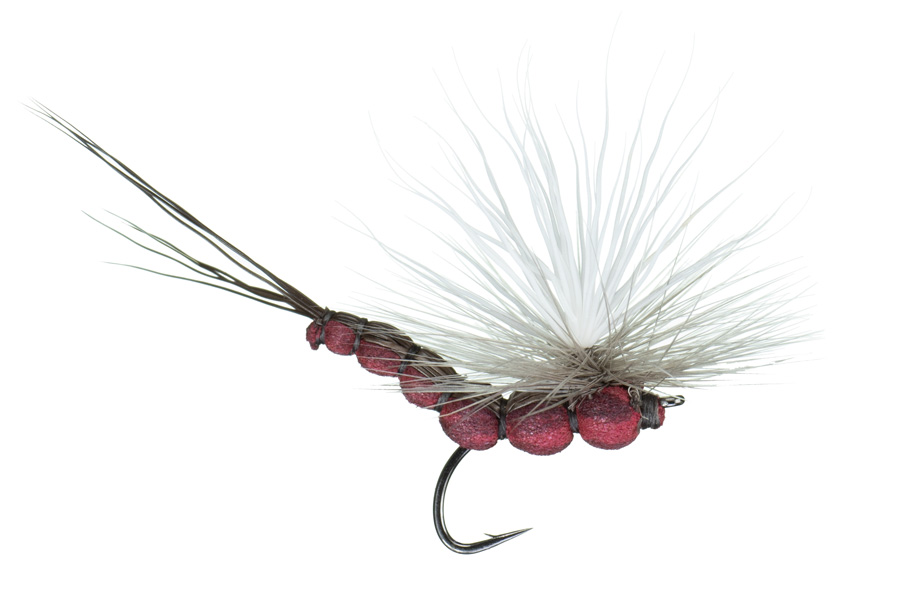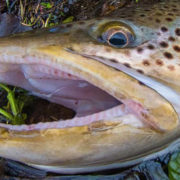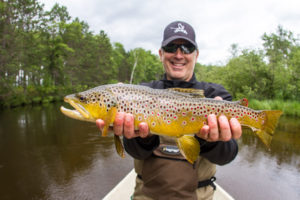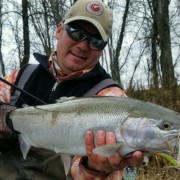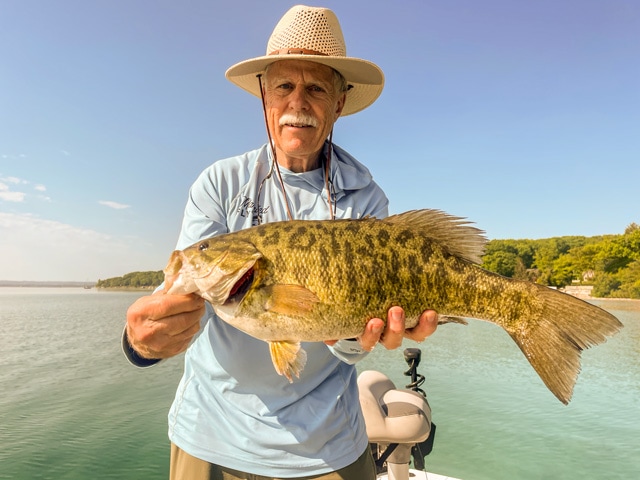Didymo on the Upper Manistee
Didymo
Didymo on the Upper Manistee continues to be a problem as it expands its chokehold upon the river. During August of 2022 we found new Didymo growth from Yellow Trees to the CCC Bridge. Didymo was not found previously in sections upstream of CCC Bridge. To put it bluntly, I would consider the entire Upper Manistee River System to be contaminated. Didymo is considered a very resilient invasive species and anglers will have to practice safe gear cleaning techniques to prevent spreading it between watersheds. These same cleaning practices will need to be followed after every fishing trip. It can be spread very easily and can result in detrimental outcomes for our trout streams.
We continue to follow the current safe cleaning practices for our gear. Currently, there are no effective methods to eradicate Didymo once it is established in a river.
To prevent spreading Didymo Clean, Drain, Dry your gear before entering another Body of Water.
- Clean your gear by removing mud and debris from all surfaces.
- Use a 10% Solution of Dishwashing Soap with hot water for 10 minutes. Then it must dry for 48 hours (mandatory if your fishing different streams).
The extent of the Didymo bloom on the Upper Manistee in 2021 was unbelievable. Didymo was observed in every section we fished downstream of the CCC Bridge. In one winter Didymo covered nearly 60 miles of stream bottom! This single event is disheartening when you consider any effort to limit its expansion into neighboring watersheds. Any efforts to do so are going to require extensive stream monitoring and habitat resiliency testing.
To determine the overall affect of Didymo on the Upper Manistee River is going to take time. However, the short term implications haven’t been favorable. The impacts to the fishing and our hatches were immediate. The hatches were inconsistent and showed lower overall insect abundance. The most alarming trend was a 65-80% decline in our catch rates. This decline was especially noticeable in sections dominated by Brown Trout. I would argue that Brown Trout abundance was immediately impacted by the presence of Didymo.
I expect Didymo will continue to expand its foothold in the Upper Manistee River as we enter 2023. The fall leaf drop will allow more sunlight penetration through the canopy and the colder temperatures will promote new Didymo growth. Further habitat decline will continue to allow for it to take over and expand its range in previously unaffected sections. At this current time I am not very optimistic that Didymo has run its course and will become dormant anytime soon.
Change the Conversation
This has been arguably one of the toughest trout seasons I have seen. The amount of change that has occurred over the past 5 to 6 years is very alarming. The Upper Manistee River has some systemic issues and neglected circumstances that need to be addressed. Habitat loss, water quality, invasive species concerns, all have reached their tipping point. We need to institute some major changes in our management approach if our aquatic resources are going to last for future generations to enjoy. It’s time to change the conversation!
Our state needs to manage our lakes and streams from a watershed perspective with a holistic approach. You can’t ask one biologist to manage several watersheds with the expectation of being effective, efficient, and able to identify problems before they occur. We need to bring Fisheries, Wildlife, and Forestry divisions to the same table. These departments need to review all the management recommendations under one microscope before implementing any action plans. The old days of stream management “between the river banks” has long outlived its effectiveness and we need a new direction moving forward.
The Upper Manistee River is designated as a Natural River. A Natural River is afforded extra protections for “the purpose of preserving and enhancing its values for water conservation, its free flowing condition, and its fish, wildlife, boating, scenic, aesthetic, floodplain, ecologic, historic, and recreational values and uses. The area shall include adjoining or related lands as appropriate to the purposes of the designation. The department shall prepare and adopt a long-range comprehensive plan for a designated natural river area that sets forth the purposes of the designation, proposed uses of lands and waters, and management measures designed to accomplish the purposes.” Yet the river is failing to thrive under these protections!
Natural Rivers Act
The Natural Rivers Act designation was implemented to enhance the river, but the permitting process for habitat projects is making this crucial work more expensive and harder to complete. It may be time to retool this law and make it more user friendly for its intended purpose. It’s also time to have a serious discussion about increasing the stream buffer protections afforded by this act. Moving forward we need to hold our State agencies more accountable for their failures, but also applaud them for their successes. Unfortunately our State failed miserably at developing an effective awareness campaign for Didymo.
Many of the issues I have mentioned are fixable, but it is going to take time, money, and hard work. Didymo didn’t just appear over night, this problem has been several years in the making. Didymo is just a symptom of larger systemic issues plaguing an already unhealthy system. It has likely been in the Upper Manistee River for some time, but the necessary conditions for Didymo to take over are just now being exposed. The overall river health is at its tipping point. Habitat decline, nutrient decline, extensive low-flow periods, increased solar exposure, and uniform habitats characterized by increasingly wide, shallow, sandy areas have all accelerated in the past 5 years. Our streams are in desperate need of more habitat monitoring and rehabilitation programs to mitigate the accelerated pace of change and unbalanced outcomes.
Unforeseeable Changes
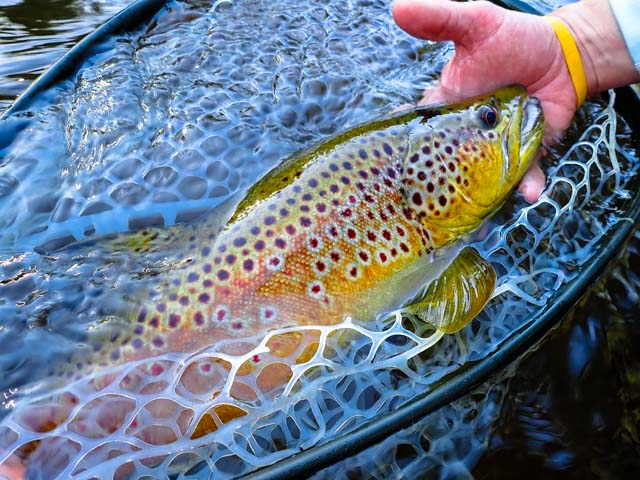
The Upper Manistee River Trout Fishing has been up and down throughout 2022. Hatches were lighter and far more inconsistent than what we should experience. More intense rain events followed by longer low-flow periods and drought are increasing the stream width and sedimentation issues. The loss of large woody debris has now outpaced the recruitment of new woody structure. Changing Hydrologic conditions and the lack of stable woody debris structures have accelerated the loss of critical deep water habitats. These trends have all accelerated over the past 5 years and now we are seeing the effects of rapid habitat decline.
Unfortunately the river can no longer maintain its characteristic cold water flows as it has become too shallow and impacted with sand. In 2021, we observed a colder two degree water temperature difference between the M72 gauge and the 4 mile access monitoring station. During June and July of 2022 that colder 2 degree difference in water temperature was lost and temperatures were uniform between the two gauges. In recent years water temperatures have fluctuated 8 to 14 degrees over a 24 hour period. A healthy stream shouldn’t show this kind of temperature profile. As a consequence we are now seeing significant Didymo growth above the CCC Bridge where it wasn’t found a year ago.
The large swings in water temperatures have been one of the most noticeable changes throughout the watershed. These big swings in water temperature have had negative impacts upon our insect hatches. This is the first year I have experienced so much inconsistency throughout the hatch season. Normally the Hex hatch lasts about two weeks, but the hatch was stretched out over an entire month. Water temperatures would drop at night to around 58 degrees and climb during the daytime reaching highs of 70+ degrees. These big temperature oscillations will continue to impact our hatches and disrupt our fishing until the habitat conditions promoting these issues are addressed.
Habitat Decline
Unstable weather patterns had some negative affects on the fishing this year, but that wasn’t the only observable change. Habitat decline has accelerated over the past 5 years. Habitat loss has reached a critical threshold and now the river’s ability to buffer against drastic change is losing ground. The Upper Manistee River has become dominated by expansive wide, shallow, sandy areas of uniform habitat lacking woody debris. Large areas of shade providing deciduous trees have also been lost to disease and invasive species. This combination of declining habitat variables is allowing for more light penetration to reach the stream bed. Habitat decline and a warming temperature profile are two critical changes we are now seeing on an annual basis.
The Upper Manistee River is becoming warmer as the stream becomes wider, shallower, and more surface water is exposed to sunlight. During June and July, the longest day length of the year, the river is struggling to maintain colder temperatures under sunny conditions. Intense solar exposure is winning the battle and we are now experiencing more days with 70+ degree water temperatures. Water temperatures have still exceeded 70 degrees on sunny days with high temperatures only approaching 75 degrees for the day. The lowest water temperatures we observed during June and July were typically associated with cloudy conditions and cold fronts. I firmly believe declining habitat conditions are a prerequisite for Didymo to take over a stream.
Studies have shown that shallow, wide, cold streams with moderate flows, increased solar exposure, and low phosphorous are more susceptible to Didymo blooms. Statistically, low phosphorous conditions appear to be the primary driver for Didymo blooms in streams. Phosphorous is a critical variable in trout streams often impacting algal and macro-invertebrate communities. When stream phosphorous levels are too high you will often see explosive algal and plant growth. One would expect to see increasing macro-invertebrate abundances due to increasing nutrient loads, but often there is a subsequent decline in species diversity. Didymo is a strange case, it prefers ultra low-phosphorous levels to bloom. This diatom is quite the opposite of most algae and will only show extreme growth in streams when phosphorous levels hit rock bottom.
Interestingly, phosphorous levels are at an all time low in the Great Lakes Region since the introduction of Zebra and Quagga Mussels. The post-mussel Great Lakes are functionally different today than the pre-mussel Great Lakes. Today the Great Lakes are primarily nutrient poor systems characterized by very clear waters which is a 180 degree change from the late 1980’s. Today nutrient loads are very different, the lakes are exceptionally clear, warm differently, and winter is pretty much a thing of the past. One has to consider the functional change that has occurred throughout the Great Lakes region and how these changes have impacted our inland ecosystems. Just a little food for thought regarding the primary driver of change to our regional ecosystems.
Here to Stay
Didymo has had an immediate impact this season, especially in the sections downstream of the CCC Bridge. The Didymo mat was very extensive and in some areas we observed over 95% coverage of the hard substrates. The amount of Didymo particles suspended in the drift from March until Late July was unlike anything I have ever seen. It was a completely different looking river downstream of the CCC Bridge. The stream bottom was almost completely covered in Didymo and there was a steady stream of Didymo particles flushing into Hodenpyle pond for over 3 months. Based on what I saw this spring, I don’t believe we have a very effective strategy in place to prevent this from spreading.
Insect activity was visibly lower and we observed inconsistencies within our hatches. Several hatches were virtually nonexistent. The overall insect activity was the lowest I have ever experienced on the Upper Manistee River. Didymo also had a tremendous impact upon our trout fishing. Every section we fished with visible Didymo growth suffered from diminishing returns. In other words you can’t catch what isn’t there! We experienced a 65-80% decline in our catch rates and it became very clear that trout Brown Trout are impacted by the presence of Didymo. There is ample research currently coming out of New Zealand that resembles our own observations. Studies have documented a 70% decline in Brown Trout biomass within streams affected by Didymo.
The trout knew it was coming! Hindsight is 20/20, but I firmly believe Didymo was already impacting fish movement early on in 2021. In June of 2021 I would argue the river experienced significant fish movement from sections downstream of the CCC Bridge. We found clusters of large Trout surprisingly pooled up together which is a situation not commonly encountered before. Other reports from Upper Sections of the river mentioned more large Brown Trout in their catch. However, I have been finding more large Trout in poor overall condition during the past few seasons, probably resulting from crowded conditions and declining food availability. Studies in New Zealand have demonstrated larger Brown Trout are adversely affected in Didymo infected streams and those streams were dominated by smaller sized trout (lower biomass).
An interesting observation, that was confirmed by several other guides, was off colored water conditions for several weeks during June of 2021 and again in June of 2022. The water had a light tannic stain during a long, hot drought period. Typically the Upper Manistee River would have a gin clear appearance during low water conditions. Instead the water had a golden brown hue and the surface looked black during low light periods. Coincidently, Didymo cells are amber or golden brown in color. In August of 2022 we found significant Didymo growth in sections upstream of the CCC Bridge where the water color was off during June. It is my belief that these water conditions are a precursor for visible Didymo growth.
Didymo is a ghost and only becomes visible when it goes into bloom. In August of 2022 Didymo was discovered on the Boardman River in Traverse City, MI. It was found in a section that was previously sampled during the spring using rock scrapings. During the spring Didymo was not found anywhere outside of the Upper Manistee River watershed. This example demonstrates the importance of expanding our sampling techniques in an attempt to increase early detection of Didymo in our streams. Currently we don’t have an effective early detection method, this needs to be addressed if we are going to get ahead of this issue.
A study from New Zealand found Didymo in streams without bloom formations. In some streams Didymo was present only in the water column and not on the substrates. In other streams Didymo was present in both the water column and on the substrates, but no bloom formations were found in either case. The takeaway here is that Didymo won’t bloom unless the conditions to do so are favorable. Early detection, habitat rehabilitation programs, and an effective mitigation strategy are desperately needed to deal with nuisance blooms in the future. It’s time to change the conversation and to make the necessary changes to our prescribed management strategies in order to mitigate blooms in previously affected and unaffected streams.
Solutions
So what does all of this mean and what will happen to the river? We are not sure, Didymo is a new threat, and the river has gone through a considerable amount of change over the past decade. Time will tell, but Didymo isn’t going to just disappear. I would be willing to bet it’s also more widespread than just within the Upper Manistee and Boardman River watersheds. After reflecting upon the past few seasons, I am even more convinced that Didymo is an indicator of overall poor stream health. Jon Ray fittingly compared Didymo to Cancer or Diabetes in an unhealthy individual. I totally agree with his comparison. Until you fix the root cause of the symptoms plaguing a stream, the stream won’t be able to become healthy and balanced again.
There is potential to avert further blooms on the Upper Manistee River. The State of Michigan hasn’t actively performed any stream habitat work in several decades. There have been several other projects that have been completed in that timeframe, but nothing at the scope of what Michigan Trout Unlimited has proposed. Michigan TU recently placed approximately 200 whole trees between Yellow Trees Landing and King Trout Ranch this fall. By using Helicopters to precisely drop large woody debris in-stream they were able to target the most diminished habitats in that section. I am excited to see the results of all this work in the upcoming season!
There are a lot of unknowns regarding Didymo. Largely, no one has any real answers to its native range or origin. Is it invasive or a native nuisance species? What are the environmental conditions that promote large blooms? How do we treat affected streams and prevent future outbreaks? These are all important questions that need to be answered, but the fact is Didymo is already here and it isn’t going to just go away.
Utilizing a holistic management approach and establishing long term monitoring programs should be top on the list. As we hear more on what you can do to help in this fight and as we find out more information regarding Didymo we will be sure to let you know. Right now the best thing you can do is voice your concerns with your local State agencies and demand change in how we manage our resources. Demand more from our resource managers and continue to help out with local projects that can help preserve and protect the future of our favorite trout streams.
Ed McCoy

